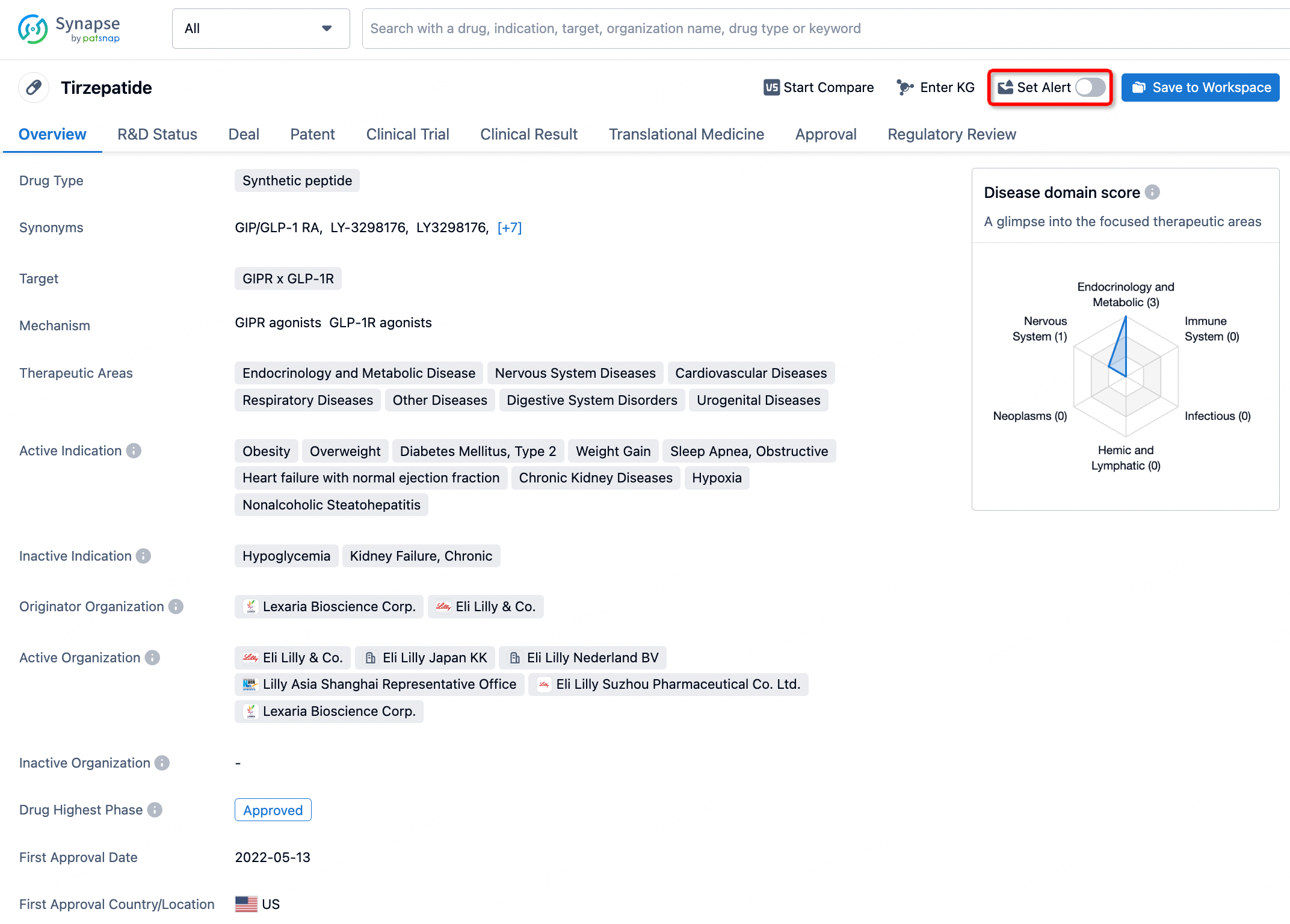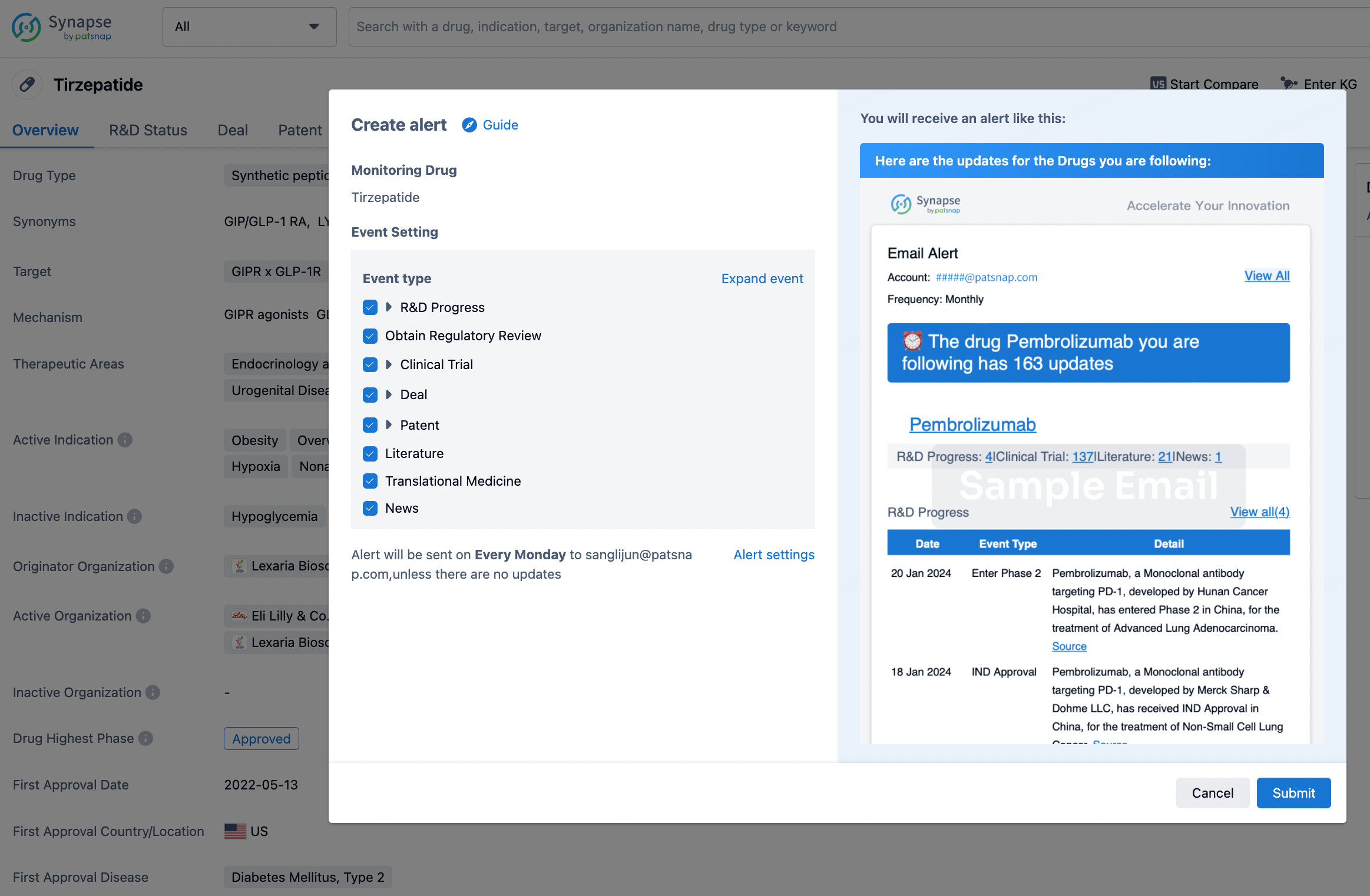Request Demo
What are the side effects of Diroximel fumarate?
12 July 2024
Diroximel fumarate is a medication primarily used to treat relapsing forms of multiple sclerosis (MS), a chronic autoimmune disorder affecting the central nervous system. While it offers significant benefits in managing MS, like any medication, it comes with potential side effects. Understanding these side effects can help patients and healthcare providers make informed decisions about its use.
One of the most common side effects of Diroximel fumarate is flushing. This involves redness, warmth, itching, or a tingling sensation on the skin. Flushing usually occurs shortly after taking the medication and can last for a short duration. Although it can be uncomfortable, it is generally not harmful. Taking the medication with food can often minimize this side effect.
Gastrointestinal issues are another frequently reported side effect. Patients may experience nausea, vomiting, diarrhea, and abdominal pain. These symptoms are most prominent during the initial weeks of treatment and often decrease over time. Again, taking Diroximel fumarate with food may help reduce gastrointestinal discomfort.
Liver function abnormalities are also a concern. Elevated liver enzymes have been observed in some patients taking Diroximel fumarate. Regular monitoring of liver function through blood tests is recommended, especially during the first six months of treatment. If significant liver issues are detected, discontinuation of the medication may be necessary.
Lymphopenia, a condition characterized by a reduced level of lymphocytes (a type of white blood cell), is another potential side effect. This reduction can increase the risk of infections. Routine blood tests to monitor lymphocyte counts are advisable. If lymphocyte levels drop too low, a healthcare provider might consider adjusting the dose or discontinuing the medication.
Some patients may also experience allergic reactions, ranging from mild to severe. Symptoms of an allergic reaction can include rash, itching, swelling, severe dizziness, and difficulty breathing. Immediate medical attention is required if any signs of a severe allergic reaction are observed.
Other less common side effects may include headaches, back pain, or increased blood pressure. While these are not usually severe, they can still impact the quality of life for some patients. Communicating any new or worsening symptoms to a healthcare provider is essential for proper management.
In rare cases, Diroximel fumarate has been associated with progressive multifocal leukoencephalopathy (PML), a serious brain infection caused by the JC virus. PML is a potentially life-threatening condition that requires immediate medical intervention. Symptoms of PML can include clumsiness, progressive weakness, vision problems, and changes in thinking, personality, or memory.
Overall, while Diroximel fumarate can be effective in managing multiple sclerosis, it is crucial to be aware of its potential side effects. Regular monitoring, open communication with healthcare providers, and adherence to prescribed guidelines can help mitigate risks and enhance the therapeutic benefits of the medication. Always consult with a healthcare professional before making any changes to your treatment plan.
One of the most common side effects of Diroximel fumarate is flushing. This involves redness, warmth, itching, or a tingling sensation on the skin. Flushing usually occurs shortly after taking the medication and can last for a short duration. Although it can be uncomfortable, it is generally not harmful. Taking the medication with food can often minimize this side effect.
Gastrointestinal issues are another frequently reported side effect. Patients may experience nausea, vomiting, diarrhea, and abdominal pain. These symptoms are most prominent during the initial weeks of treatment and often decrease over time. Again, taking Diroximel fumarate with food may help reduce gastrointestinal discomfort.
Liver function abnormalities are also a concern. Elevated liver enzymes have been observed in some patients taking Diroximel fumarate. Regular monitoring of liver function through blood tests is recommended, especially during the first six months of treatment. If significant liver issues are detected, discontinuation of the medication may be necessary.
Lymphopenia, a condition characterized by a reduced level of lymphocytes (a type of white blood cell), is another potential side effect. This reduction can increase the risk of infections. Routine blood tests to monitor lymphocyte counts are advisable. If lymphocyte levels drop too low, a healthcare provider might consider adjusting the dose or discontinuing the medication.
Some patients may also experience allergic reactions, ranging from mild to severe. Symptoms of an allergic reaction can include rash, itching, swelling, severe dizziness, and difficulty breathing. Immediate medical attention is required if any signs of a severe allergic reaction are observed.
Other less common side effects may include headaches, back pain, or increased blood pressure. While these are not usually severe, they can still impact the quality of life for some patients. Communicating any new or worsening symptoms to a healthcare provider is essential for proper management.
In rare cases, Diroximel fumarate has been associated with progressive multifocal leukoencephalopathy (PML), a serious brain infection caused by the JC virus. PML is a potentially life-threatening condition that requires immediate medical intervention. Symptoms of PML can include clumsiness, progressive weakness, vision problems, and changes in thinking, personality, or memory.
Overall, while Diroximel fumarate can be effective in managing multiple sclerosis, it is crucial to be aware of its potential side effects. Regular monitoring, open communication with healthcare providers, and adherence to prescribed guidelines can help mitigate risks and enhance the therapeutic benefits of the medication. Always consult with a healthcare professional before making any changes to your treatment plan.
How to obtain the latest development progress of all drugs?
In the Synapse database, you can stay updated on the latest research and development advances of all drugs. This service is accessible anytime and anywhere, with updates available daily or weekly. Use the "Set Alert" function to stay informed. Click on the image below to embark on a brand new journey of drug discovery!
AI Agents Built for Biopharma Breakthroughs
Accelerate discovery. Empower decisions. Transform outcomes.
Get started for free today!
Accelerate Strategic R&D decision making with Synapse, PatSnap’s AI-powered Connected Innovation Intelligence Platform Built for Life Sciences Professionals.
Start your data trial now!
Synapse data is also accessible to external entities via APIs or data packages. Empower better decisions with the latest in pharmaceutical intelligence.


